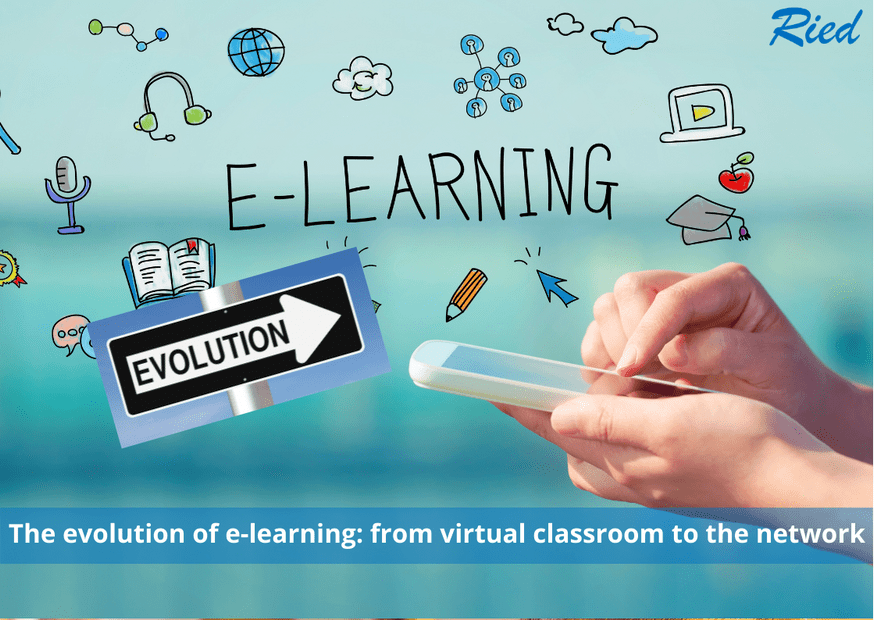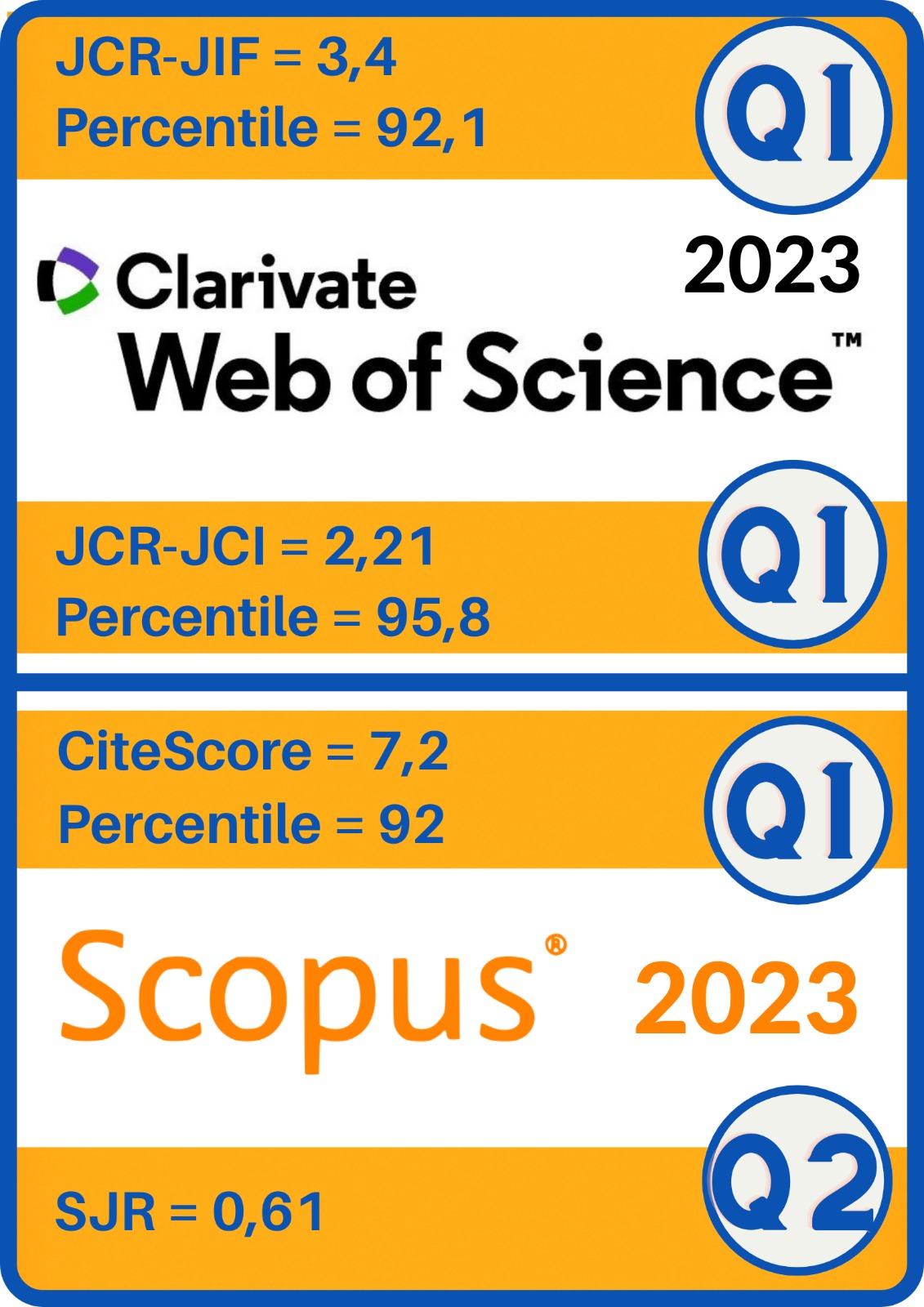The evolution of e-learning: from virtual classroom to the network
DOI:
https://doi.org/10.5944/ried.21.2.20577Keywords:
Distance education, Open education, Open learning, E-learning, Blended learningAbstract
The main goal of this article is to analyse the evolution and challenges of e-learning, with special emphasis on the need to move from a closed space-the virtual classroom-to incorporate adaptive tools that guarantee a much more personalized use. The article describes the evolution of e-learning from a pedagogical and technological point of view and shows how the training spaces have diversified beyond the virtual classroom. E-learning is incorporating more open pedagogical designs in which different people can share content, activities and experiences in formal and informal situations. Research in this field shows that students with less self-regulation capabilities tend to fail. On the contrary, the most successful students show greater efficiency and efficiency in self-regulated learning. Research on the role of students in virtual learning environments highlights the importance of self-regulation processes in the success of the results. Emerging technologies such as the use of adaptive systems, intelligent agents and the learning analytics can facilitate the processes of adaptation and self-regulation. The adoption of these technology can provide real-time information to learners and to facilitate strategies for scaffolding during the learning process.
Downloads
References
Adams, S., Cummins, M., Davis, A., Freeman, A., Hall Giesinger, C., & Ananthanarayanan, V. (2017). NMC horizon report: 2017 higher education edition. Austin, Texas: The New Media Consortium.
Adell, J. y Castañeda, L. (2013). El ecosistema pedagógico de los PLEs. En L. Castañeda y J. Adell (Eds.), Entornos Personales de Aprendizaje: Claves para el ecosistema educativo en red (29-51). Alcoy: Marfil.
Anderson, T., y Dron, J. (2011). Three generations of distance education pedagogy. The International Review of Research in Open and Distance Learning, 12 (3), 80-97.
Area, M. y Adell, J. (2009). eLearning: Enseñar y aprender en espacios virtuales. En J. De Pablos (Coord), Tecnología Educativa. La formación del profesorado en la era de Internet (391-424). Málaga: Aljibe,
Bartolomé, A., y Steffens, K. (2011). Technologies for self-regulated learning. En R. Carneiro (Coord), Self-Regulated Learning in Technology Enhanced Learning Environments (21–31). London: Sense Publishers.
Cabero, J. (2013). El aprendizaje autorregulado como marco teórico para la aplicación educativa de las comunidades virtuales y los entornos personales de aprendizaje. Teoría de la Educación. Educación y Cultura en la Sociedad de la Información, 14(2), 133-156.
Chatti, MA, Jarke, M., y Specht, M. (2010). The 3P Learning Model. Educational Technology y Society, 13 (4), 74-85.
Cho, M. H., y Cho, Y. (2017). Self-regulation in three types of online interaction: a scale development. Distance Education, 38(1), 70-83.
Dabbagh, N., y Kitsantas, A. (2012). Personal Learning Environments, social media, and self-regulated learning: A natural formula for connecting formal and informal learning. The Internet and higher education, 15(1), 3-8.
Daniel, J., Vázquez Cano, E. y Gisbert, M. (2015). El futuro de los MOOC: ¿aprendizaje adaptativo o modelo de negocio?. RUSC. Universities and Knowledge Society Journal, 12 (1), 64-74. http://dx.doi.org/10.7238/rusc.v12i1.2475
Darabi, A., Liang, X., Suryavanshi, R., y Yurekli, H. (2013). Effectiveness of online discussion strategies: A meta-analysis. American Journal of Distance Education, 27(4), 228–241.
Dinçer, S., y Doğanay, A. (2017). The effects of multiple-pedagogical agents on learners’ academic success, motivation, and cognitive load. Computers & Education, 11 (1), 74-100.
Downes, S. (2012). E-Learning generations. Recuperado de http://halfanhour.blogspot.be/2012/02/elearning- generations.html
García-Holgado, A., y García-Peñalvo, F. J. (2017). Gestión del conocimiento abierto mediante ecosistemas tecnológicos basados en soluciones Open Source. Congreso Ecosistemas del Conocimiento Abierto. Salamanca: Universidad de Salamanca. doi: https://gredos.usal.es/jspui/handle/10366/135570
García-Peñalvo, F.J, y Seoane-Pardo, A.M. (2015). Una revisión actualizada del concepto de eLearning. Décimo Aniversario. Education in the Knowledge Society, 16 (1), 119-144. doi:http://dx.doi.org/10.14201/eks2015161119144
Gros, B., y García-Peñalvo, F. J. (2016). Future trends in the design strategies and technological affordances of e-learning. Learning, Design, and Technology: An International Compendium of Theory, Research, Practice, and Policy, 1-23
Gros, B. (2016). Retos y tendencias sobre el futuro de la investigación acerca del aprendizaje con tecnologías digitales. Revista de Educación a Distancia, 32, 1-13
Henderson, M., Selwyn, N., y Aston, R. (2017). What works and why? Student perceptions of ‘useful’digital technology in university teaching and learning. Studies in Higher Education, 42(8), 1567-1579.
Kizilcec, R. F., Pérez-Sanagustín, M., y Maldonado, J. J. (2017). Self-regulated learning strategies predict learner behavior and goal attainment in Massive Open Online Courses. Computers & education, 104, 18-33. https://doi.org/10.1016/j.compedu.2016.10.001
Lang, C., Siemens, G., Wise, A., y Gasevic, D. (Eds.) (2017). Handbook of learning analytics. London: SOLAR. http://dx.doi.org/10.18608/hla17
Lerís López, D., Vea Muniesa, F., y Velamazán Gimeno, A. (2015). Aprendizaje adaptativo en Moodle: Tres casos prácticos. Education in the Knowledge Society, 16 (4), 138-157. doi: http://dx.doi.org/10.14201/eks201516138157
Nikolaki, E., Koutsouba, M., Lykesas, G., Venetsanou, F., y Savidou, D. (2017). The support and promotion of self-regulated learning in distance education. European Journal of Open, Distance and E-learning, 20(1).
Noesgaard, S. S., y Ørngreen, R. (2015). The effectiveness of e-learning: An explorative and integrative review of the definitions, methodologies and factors that promote e-learning effectiveness. Electronic Journal of e-Learning, 13(4), 278–290.
Rowe, F. A., y Rafferty, J. A. (2013). Instructional design interventions for supporting self-regulated learning: enhancing academic outcomes in postsecondary e-learning environments. Journal of Online Learning and Teaching, 9(4), 590-610.
Siemens, G., & d Baker, R. S. (2012). Learning analytics and educational data mining: towards communication and collaboration. En Proceedings of the 2nd international conference on learning analytics and knowledge (pp. 252-254). ACM. Disponible en https://pdfs.semanticscholar.org/c245/a3403d6fd4064e6fd7666914a29afc7fe5ea.pdf
Siemens, G. (2005). Connectivism: A learning theory for the digital age. International Journal of Instructional Technology and Distance Learning, 2 (1), 3-10.
Siemens, G. (2014). Digital Learning Research Network. Learnspace, November. Recuperado de http://www.elearnspace.org/blog/2014/11/18/digital-learning-research-network-dlrn/
Siemens, G., Gašević, D., y Dawson, S. (2015). Preparing for the digital university: A review of the history and current state of distance, blended, and online learning. Edmonton: Athabasca University.
Sung, Y. T., Chang, K. E., y Liu, T. C. (2016). The effects of integrating mobile devices with teaching and learning on students' learning performance: A meta-analysis and research synthesis. Computers & Education, 94, 252-275.
Triquet, K., Peeters, J., y Lombaerts, K. (2017). Self-Regulated Learning Online: Empirical Foundations, Promotion & Evaluation for Teacher Professional Development. Contributing SRL Part to TeachUP. A policy experimentation co-funded by Erasmus+. Deliverable D1.1: Gaps in ITE and CPD provision report. Department of Educational Sciences, Brussels: Vrije Universiteit.
Van Laer, S., y Elen, J. (2017). In search of attributes that support self-regulation in blended learning environments. Education and Information Technologies, 22(4), 1395-1454.
Vázquez-Cano, E., Martín-Monje, E., y Castrillo de Larreta-Azelain, M. D. (2016). Analysis of PLEs' Implementation under OER Design as a Productive Teaching-Learning Strategy in Higher Education. A Case Study at Universidad Nacional de Educación a Distancia. Digital Education Review, 29, 62-85.
Vázquez-Cano, E. (2015). El reto tecnológico para la sostenibilidad de los massive open online course (MOOC). Panorama, 9(17) pp. 51-60.
Wilson, S. (2008). Patterns of Personal Learning Environments. Interactive Learning Environments,
(1), 17-34.
Yen, C. J., Tu, C. H., Sujo-Montes, L., y Sealander, K. (2016). A Predictor for PLE Management: Impacts of Self-Regulated Online Learning on Students’ Learning Skills. Journal of Educational Technology Development and Exchange (JETDE), 9(1), 3
Yoshida, H. (2016). Perceived Usefulness of “Flipped Learning” on instructional design for elementary and secondary education: with focus on pre-service teacher education. International Journal of Information and Education Technology, 6 (6), 430-434. doi:10.7763/IJIET.2016.V6.727

Downloads
Published
How to Cite
Issue
Section
License

This work is licensed under a Creative Commons Attribution 4.0 International License.
The articles that are published in this journal are subject to the following terms:
1. The authors grant the exploitation rights of the work accepted for publication to RIED, guarantee to the journal the right to be the first publication of research understaken and permit the journal to distribute the work published under the license indicated in point 2.
2. The articles are published in the electronic edition of the journal under a Creative Commons Attribution 4.0 International (CC BY 4.0) license. You can copy and redistribute the material in any medium or format, adapt, remix, transform, and build upon the material for any purpose, even commercially. You must give appropriate credit, provide a link to the license, and indicate if changes were made. You may do so in any reasonable manner, but not in any way that suggests the licensor endorses you or your use.
3. Conditions for self-archiving. Authors are encouraged to disseminate electronically the OnlineFirst version (assessed version and accepted for publication) of its articles before publication, always with reference to its publication by RIED, favoring its circulation and dissemination earlier and with this a possible increase in its citation and reach among the academic community.







